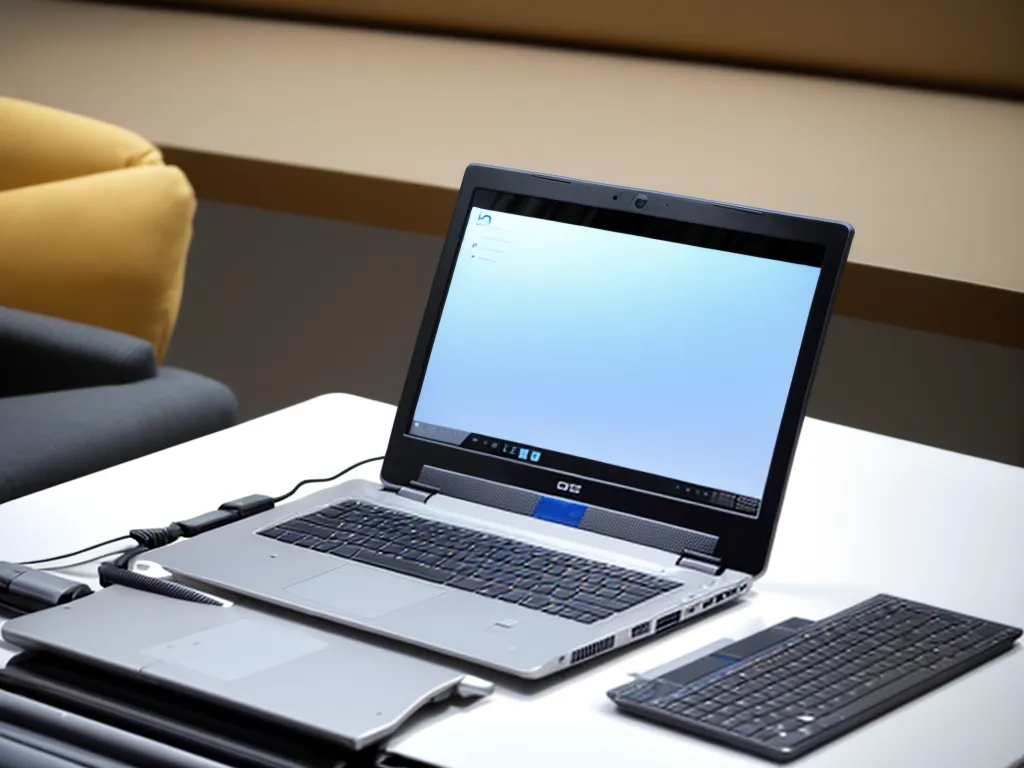Having a laptop that won’t turn on can be incredibly frustrating. However, there are several common causes and solutions that can often get your laptop up and running again. In this article, I’ll provide an in-depth look at the most common causes and solutions for a laptop that won’t power on.
Potential Causes
There are a few key components that need to function properly in order for a laptop to turn on. An issue with any of these can prevent your laptop from powering up. Here are some of the most common culprits:
Faulty Power Adapter or Battery
The first thing to check is the power supply to your laptop. Make sure the AC adapter is plugged into both the wall and laptop firmly. Try wiggling the connections to ensure they aren’t loose. Also, verify the wall outlet is working by plugging in another device.
If you’re trying to turn on a laptop with only the battery, the battery could be dead. Test with the AC adapter plugged in to rule out a bad battery.
RAM Issues
Problems with the RAM (memory) like compatibility issues or a stick becoming loose can stop a laptop from booting. Take out each RAM stick and try powering up with only one installed to test if one of the sticks is faulty.
Motherboard Failure
The motherboard houses critical components like the CPU and BIOS. If it’s damaged or components have failed, it can prevent POST (power on self test) from completing properly. This will lead to the laptop not powering on.
Faulty Power Button
If the power button itself is broken, it won’t send the electrical signal to start the boot process. Try pressing the power button multiple times to see if it’s unresponsive.
BIOS Settings
Incorrect BIOS settings like disabling the integrated graphics card can stop the boot process. Reset BIOS to default settings to see if that fixes the no power issue.
Troubleshooting Solutions
Now that we’ve covered potential causes, here are some solutions to troubleshoot a laptop that won’t turn on:
Inspect for Physical Damage
Carefully inspect your laptop for any physical signs of damage like cracked casing or exposed internal components. Any physical damage could lead to a laptop not powering on and should be repaired.
Drain Residual Power
Over time, residual power can build up in components. Completely drain the laptop by removing the battery and AC adapter and holding down the power button for 60 seconds. Then reconnect everything and try turning on.
Replace/Reseat Components
As mentioned, issues with components like RAM and battery can prevent booting. Try reseating components by taking them out and putting them back in. Also test with known working spare components if you have them available.
Reset CMOS Battery
The CMOS battery provides power to the laptop’s BIOS. Resetting it by temporarily removing the battery can fix settings issues that are preventing POST. Look up instructions specific to your laptop model.
Connect to External Display
If your laptop powers on but nothing shows on the display, connect it to an external monitor to isolate whether it’s an issue with the integrated display.
Perform Hardware Diagnostics
Run diagnostics provided by the manufacturer (HP, Dell etc.) to detect and isolate component failures. This can pinpoint exactly what hardware issue is causing the no power problem.
Contact Repair Service
For any issue that you cannot resolve through troubleshooting, take your laptop to a qualified repair service. Techs can perform more advanced diagnostics and repairs to get your laptop functioning again.
Preventing Future No Power Issues
Here are some tips to help avoid your laptop not turning on again in the future:
-
Keep the laptop battery and AC adapter in good condition. Replace them if there are any signs of damage.
-
Shut down the laptop properly and avoid force powering off.
-
Keep the laptop free of dust buildup by cleaning the cooling fans.
-
Don’t place the laptop in areas prone to physical damage.
-
Update BIOS and drivers to latest stable versions.
-
Avoid exposing laptop to extreme temperatures.
Properly maintaining your laptop and handling it with care can go a long way in preventing frustrating no power issues. But should it stop turning on again, use the solutions outlined in this article to troubleshoot and get your laptop powered up and running once more. Let me know if the information provided here helps resolve your particular no power situation!













